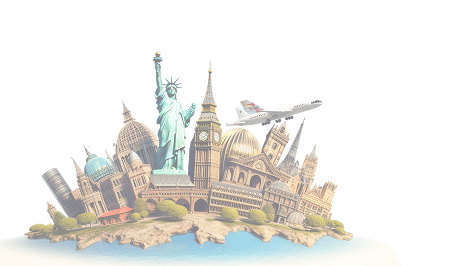Introduction
The managers and the leaders of the organization maintains different department such as management, logistics, running, arrangement, organizing, structure selection, coordination, and planning (Hilton and Platt, 2013). The organizations based In UK has also enlarged and expanded their business spheres in many countries. Based on the present organizational scenario, Tesco PLC has established various functions in the organization for increasing the productivity at the end of the financial year.
PART 1
TASK 1
P1
The large organizations in United kingdom has been chosen as the prime organizations in this research study and different types of the purpose of the organizations, public, private and the voluntary sectors legal structures in the United Kingdom. There are many large organizations such as Sainsbury PLC and the Asda Stores Limited, which are the main competitors of the Tesco PLC. The large organizations in United Kingdom such as Tesco PLC can also make the opportunities for the accomplishing the competitive advantages and thus aiding for the better marketing strategies, quality and prices in the external market (Bah and Fang, 2015).
Voluntary Industry
The Voluntary industry has been comprised with many individuals and personnel and thus grouping towards for accomplishing any common purpose and objective. In United Kingdom, there is lot of organizations and thus all the companies in the industries are striving for adopting various changes of the socio-economic developments for the rural people of the country. OXFAM is one of the famous voluntary company which is founded at Oxford, England in year 1942. This company focus on poverty eradication, disaster relief, advocacy, policy research and pro migration. They serve their services at worldwide level. The main objective of the voluntary organizations is to manage out the blood for the ill patients in the hospital and thus raising funds for poor people in the country in the form of charitable tasks and regional enterprises. The main purpose of the respective organization is as follows:
- The OXFAM organizations in the country are based with religious and the social motives and thus experiencing charitable tasks in the country.
- The respective organizations are not a part of any government body or a local authority and it runs on the collection of funding from the common people of the country and thus using the surplus for earning and thus meeting the desired objectives and aims of the organization (Chenchehene and Mensah, 2015).
Private Industry
The largest organizations in the country have set their aims in earning profit at the beginning of the business process. Tesco Plc have also performed in the wholesale and retail market of United Kingdom. The organizations have also increased the level of expectations and thus increasing the level of profit for the organization. The purpose of Tesco Plc are given below:
- Major purpose of respective company is to earn maximum profits form their activities and shareholders.
- The other main objective of Tesco Plc is to create transparency in financial reporting and annual report. But this transparency is only for their key stakeholders not for public at wide level.
Public Industry
Many public limited organizations in the country have no upper limitations and thus creating various issues with any kind of stocks for the common people of the country. The public limited organizations are the most influential than the private industry as the industry showcases the own advertisements and promotions in front of the people with the help of different prospectus and the serving equity. NHS( National Health Service) is a public sector industry which is establish in year 1948 and its headquarter is in Richmond House, London, England. They are providing health care services to every legal English resident. The major purpose of NHS are:
- The major purpose of respective industry is to provide services to publics which conclude public products and government services such as health care, military, police and many other.
P2
Size of various business organizations in United Kingdom
There are various type of business are conduct in different sectors and it can be majorly divided into private companies, public companies and voluntary company (Craig and Campbell, 2012). Description of all these industry according to certain company is given below:
Private Company – It is also know as privately held company or closed corporation which is owned by any non government organization or small number of shareholder. For this type companies no minimum capital is required. Their are various features to this sector some of them are there is minimum 2 and maximum 200 members, there is restriction of transferability of shares and many others. The major expamle of this sector is Tesco Plc, whose description is below-
|
NUMBER OF STORES |
6553 |
|
Amount of capital |
1280 Billion Great Britain Pound |
|
AMOUNT OF YEARLY REVENUE |
55.9 billion Great Britain Pound |
|
Number of staffs |
4,76,000 and above |
Scope: Their is wide scope of Tesco Plc in expanding their market by sell their products and services with wide and new technology and innovation which attract more and more customers. They can also introduce or lunch new range of products according to need and demand of customers which help them in enhancing their share market and profitability.
Public Limited Company- It is a legal naming of limited liability company which offers shares public and their liabilities are limited. They serve there products and services to general public and also for their welfare or social care. National Health Service is a company which offer their products to general public for health care motive.
|
NUMBER OF LOCATION |
Worldwide |
|
AMOUNT OF OPERATING INCOME |
Around £126.269bn |
|
NUMBER OF STAFF |
Approx 1.4 million |
Scope: They can enhance their services and products and cover their business in more location so that they able to earn more profit. They can do this because peoples are happy with their services in the areas in which they are serving their products and services so that this sis seems as a scope for them.
Voluntary Company: It refers to those industry whose major purpose is to provide benefits and help to society. These organization done this type of work without any profit motive and have little or negligible support form government interventions (Laudon and Traver, 2016). Some voluntary organization sectors are charities, foundations, social welfare organization, advocacy group and many others. OXFAM is of the well know voluntary company which is non profit organization.
|
NUMBER OF STAFF |
Approx 75,000 |
|
AMOUNT OF YEARLY REVENUE |
Approx € 1,040.7 Million |
|
AMOUNT OF STORES |
Approx 650 |
Scope: The Voluntary industry has been comprised with many individuals and personnel and thus grouping towards for accomplishing any common purpose and objective. In United Kingdom, there is lot of organizations and thus all the companies in the industries are striving for adopting various changes of the socio-economic developments for the rural people of the country. It has many scopes in grow the sphere of the company.
M1
The structure, size, and scope of various companies connect to the business objectives, services and products offered by the company are being analyzed
Public Limited Company:
Company Background: Tesco plc. Is British groceries and general merchandise retail who server their products and services at worldwide level. It is know as third largest retail store in world.
Products and Services: They offer groceries and general merchandise at their retail store.
Size and Scope: It has approx 6,553 store at worldwide level and there are near by 4,77,000 employees working in these stores. They can expand their business in those areas in which they are not operating currently.
Vision: Their vision is to serve quality products to their customers and be a company whose staff and stakeholder will committed toward them .
Mission: Mission of Teso Plc. Is create values for their customers to earn their loyalty for lifetime.
Voluntary Company:
Company Background: It is a union of approx 20 independent charitable company which focus on alleviation of property at global level.
Products: They focus on poverty eradication, disaster relief, advocacy, policy research and pro-migration.
Size and Scope: They offer their products and services at worldwide level (Prajogo, 2016). In UK, there is lot of social group and all companies in business are striving for adopting various changes of the socio-economic developments for the rural people of the country.
Vision: Their vision is to serve peoples at international level so that they exercise their rights and able to manage their life in effective manner.
Mission: Develop programs and activities in appropriate manner so that they able to reduce poverty and related problems.
Private Limited Company:
Company Background: It is know as world's largest single payer healthcare system whose headquarter is in London, United Kingdom.
Products: They offer various health care services such as eye test, dental care, breath problems, long term disease and many others.
Size and Scope: It is know as world largest organization which offer health care services and it has approx 1.4 millions employees.
Vision: They want to deliver outstanding, excellent and trust able healthcare services at home, in community and at their hospital.
Mission: Their mission is to enhance healthcare facilities so that they able to build health future and peoples able to live happily and healthy.
Task 2
P3
The main functions of the organization depends on the functions of various departments like marketing, sales, survey conduction, human resource and management, accounting and finance, training and development and resource and development as well as the customer service sectors of the organizations. The marketing has been one of the most popular aspects of the organization, where the both suppliers and the customers becomes profitable and thus increasing the productivity of the organization and establishing new products in the external market. Sometimes, in the middle of the business flow the organization also delivers some of the useful messages to the employees and thus enhancing the social and the structural behavior of the organizational culture and thus maximizing the responsibility of the organization (Pantano, 2014).
The accounting and finance department of the organization has also been one of the most valued departments of the organization. The organization has also introduced a number of investments to reach and thus meeting the desired needs and targets of the business entity. The cost accountants and the chartered accountants of the organization have also played an important role as they have the responsibility in preparing the balance sheet and thus valuing the profit and loss at the end of the financial year. Many organizations in the department have also strived for the treasury investment programs for assessing over the business growth of the organization.
In large organizations, there are different regional managers, store managers. They process out the wholesale products to different stores of the country. The food trading manager, non-food trading managers and the personal managers are present under the store manager in large organizations (Raman than et al. 2017).
M2
Advantages
The advantages of the connections in between the functions of the organization and influencing on the structure are as follows
Large organizations has been integrating over the enlargement of the human resource management in order to maintain the degree of the organizational behavior and thus covering all the legislations and policies at the time of the business process.
Disadvantages
In large organizations, the managers are focused in functioning out on the behavioral aspects of the employees and thus neglecting the functioning of the manufacturing department. The quality of the goods are getting lowered and thus lowering the degree of the customer satisfaction.
D1
The organizational complexities are the number of resources measured with the help of the people, data points, activities and the function points and thus improving the organizational structures. The private organizations need to consist only of one shareholder and thus delivering huge shares to the public. The company also offers a huge amount of shares to the individuals, who have merged up with the organization in previous years (Cheung, 2014).
PART 2
P4
There are various macro economic factors which impact positively and negatively on the business operations of the companies. In that context, the impact of various macro economic factors such as political, economic, social, technological, legal and environmental factors of the business have been discussed as below.
Political: The positive impacts of political factors are that it helps to develop a clear guidelines for the operations of the business in its own country or in foreign country. Without the presence of effective political norms, the business loses the direction for operations. However, for expansion of business in other countries, the supermarkets of UK such as Tesco, Sainsbury, Asda and Morrison’s are required to follow various degree of political complexity due to diverse political norms across various countries (Menychtas et al. 2014). This makes the operations of the businesses highly complex.
Economic: The poor value of Sterling in international market has caused the import in UK costly. This negatively impacted on the business operations of various supermarkets operating in UK. All the leading supermarkets such as Asda, Tesco, Morrison’s and others have restructured its business operations to sustain its competitiveness. Thus changes in economic factors impact negatively on the business operations of the companies. But, due to the positive impact of globalization, many companies such as Tesco reduced the economic risl of value of currency fluctuation by focusing its operation on US market.
Social: The presence of diversity in social factors helps the companies to foster diversity in its business operations. However, if the companies fail to meet the demand of various social segments effectively, it will not be able to make the business sustainable. Choosing the right social segment of the business also decides on the success and failure of the business operations.
Technological: The positive influence of the technological factors helps the companies such as Tesco, Sainsbury and Morrison has been successful to reach out to large customer base by leveraging digital platform (Menychtas et al. 2014). But, the failure to access to the superior technology has caused the companies to lag behind in competition.
Legal: Many business organizations such as Tesco, Morrison’s have generated controversies related to infringement issues. Thus, following effective legal norms help the companies to achieve sustainability. However, the negative aspects of legal factors is that, it reduces the scope of business considerably.
Environmental: The negative aspect of following various environmental norms is that in increases the cost of operations. But, as it has been mandatory to include environmental norms in CSR activities for companies operating in various countries . This has become a norm of developing superior value. In that context, performing effective environmental norms gives the companies high degree of competitive advantage.
M3
PESTLE is the acronym of key factors such as political, economic, social, technological, legal and environment. The impact of these factors of the business operations of Tesco has been discussed as below.
Political: Tesco operates in various countries across the globe. This requires the company to follow different political norms across different countries. It has resulted increased cost of operations and complexity for the business. However, die to the positive impact of various free trade agreement such as EFTA, EU and others, the company becomes successful to access various liberty in its business operations (Menychtas et al. 2014).
Economic: The poor economic performance of UK has resulted poor revenue of the company. This resulted laying off many employees. But, due to the positive impact of globalization, the company has been successful to access benefits from the higher value of dollars as it focused its business in American market (economist.com, 2018).
Social: The increased inflation rate of UK has reduced the purchasing power of its consumers. This has developed key social trends for the demand of hybrid and low cost products. However, as money has been accumulated to the certain segment of society, it resulted widening of social gaps (TESCO, 2018). This required for the company to offer products at diverge ranges to meet the demand of this consumer segments.
Technological: Tesco has been successful to leverage digital technology in its business operations. This helped the company to develop high degree of synergy in online and offline platform. However, the overexposure of the company in digital media, made it vulnerable to cyber threat (Menychtas et al. 2014). But, the company has been successful to enhance its degree of market reach by integrating its business with the technology.
Legal: To make the business operations of the company, Tesco is required to follow various legal norms such as National Minimum Wage Act 1998, Goods Act 1979 and Health and Safety at Work Act 1974 (TESCO, 2018). Apart from these, the company has developed Tesco Law which would facilitate to provide legal services in Supermarkets. This way the company makes its business legally viable and more protected from external legal influence.
Environmental: Tesco has implemented Little Helps Plan to make its 20 key products such as bananas, corned beef, fresh beef and other environmentally sustainable. It has integrated its supply chain in this plan, The company take yearly measures to improve, transform and advocate its environmental measures to make its operations sustainable (Menychtas et al. 2014).
P5
Various internal and external analysis of Tesco has been discussed as below with the help of SWOT analysis. SWOT is the acronym of strength, weakness, opportunity and threat. The strength and weakness assess the internal aspects, whereas, opportunity and threats assess the external aspects.
Strength: The company has been successful to diversify its business in various market segments such as consumer goods, oil and gas, brokers, financial, legal and many others. This reduced the risk of operating business considerably. Tesco has also been successful to make considerate global presence as it has 6.809 shops located across various countries (Sogn-Grundvåg, et. al., 2013). This resulted considerate degree of strength to the business.
Weakness: due to the poor economical aspects, the company has undertaken restructuring policy, Thus caused the organization sack around 2000 employees. The company also resulted infringement controversies with Verco and Weatherford (Pantano, 2014). It negatively affected the brand image of the company. Thus, it shows a key weakness for the business.
Opportunity: The stable performance of global economy has led better economic opportunity for the business to grow in national and international market (Yu et al. 2014)
Threat: The presence of high competitive threat from Sainsbury, Marks and Spencer, Asda and Wal Mart has negatively affected the competitive threat of the company (Yu et al. 2014).
P6
To explain the strength and weakness in relation to the external macro factors of Tesco, Porter’s Five Forces analysis have been provided as below.
Threat of new entrants: As the market is positively captured by the large supermarkets such as Tesco, Sainsburry, Asda, Marks and Spencer’s and others, the market barriers in the industry has increased (Yu et al. 2014). This has reduced the threat of new entrants in the market.
Bargaining power of buyers: The stable performance of global economy has developed considerate purchasing power to the consumers (Yu et al. 2014). There is also presence of various specialized retail stores and supermarkets. This increases the bargaining power of buyers.
Bargaining power of suppliers: Tesco has developed effective contracts with its suppliers. This reduced the bargaining power of its suppliers.
Threat of substitute: In the online and offline market, there are various substitutes are available for the products offered by Tesco. These products are offered by Amazon.com, Wal-Mart, specialty retail stores and many others (Ramanathan et. al. 2017). Thus, it increases the threat of substitute of the company.
Threat of competitive rivalry: The company faced high degree of competitive rivalry from various organizations such as Marks and Spencer, Asda, Moriston’s, Wal-Mart, Amazon and others (Chenchehene and Mensah, 2015).
M4
The SWOT analysis of the Tesco helped to assess its key business aspects from various perspectives. It has led to identify the key strength and weakness presence in its internal business aspects. Thus it will help to leverage its key strength to meet the market opportunity effectively. It will also facilitate the company to reduce the negative impact of its weaknesses to overcome the threats present in the market. This way the company will be able to make its business sustainable effectively.
D2
Like all other business organizations, Tesco is also a social unit. Thus, various macro and micro economic factors impacts on the business operations of the company. As it operated in global market, the political, economic, social, legal and environmental factors influences on its decision-making aspect. As in the scenario of Brexit, the value of Sterling fell drastically against that of Dollar. This caused the company to focus more on American market than that of UK (Chenchehene and Mensah, 2015). This led the organization to lose large number of business and employees. It negatively affected the profitability and brand image of the organization. This way various macro and micro economic factors influence the decision making aspects of the company.
You may also like to read: Strategic Management for Business Success | M&S
CONCLUSION
The study outlined the scope, vision and other operational aspects of various business organizations. It also provided details of organizational structure and functions. A comprehensive PESTLE and SWOT analysis has also been provided in this study. The SWOT and PESTLE analysis identified the degree to various macro and micro economic factors influence the decision-making aspects of companies such as Tesco.

























